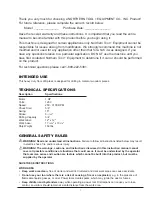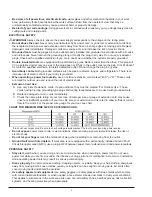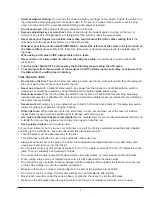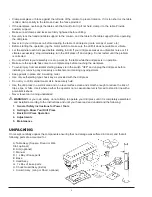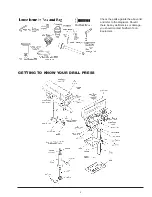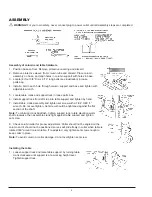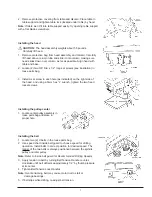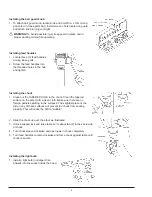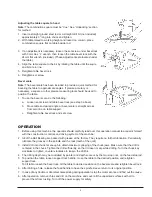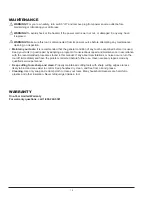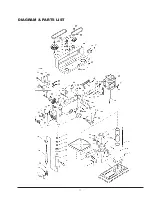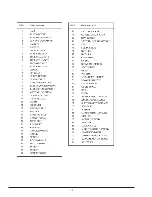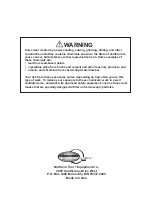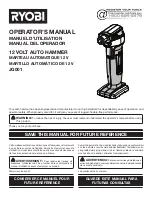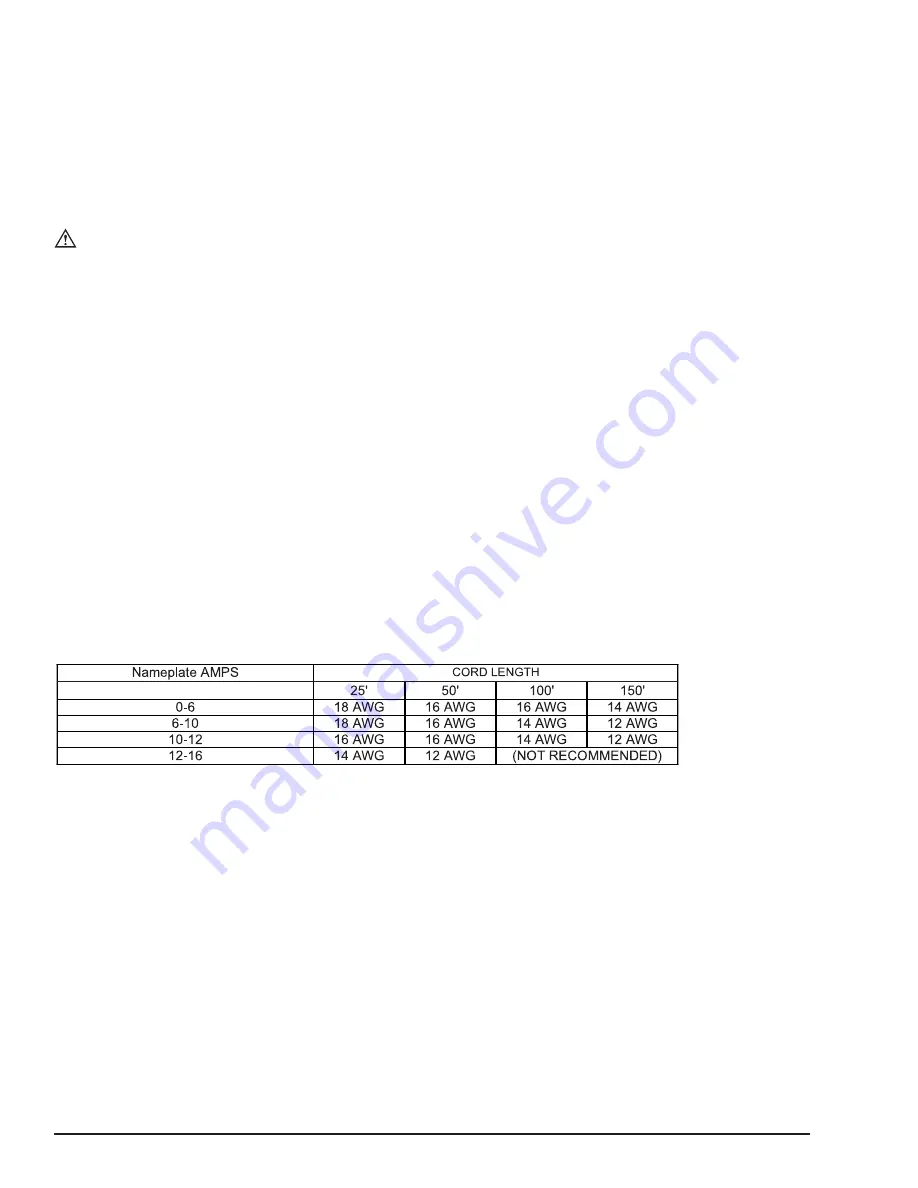
2
• Be aware of all power lines, electrical circuits,
water pipes and other mechanical hazards in your work
area, particularly those hazards below the work surface hidden from the operator's view that may be
unintentionally contacted and may cause personal harm or property damage.
• Be alert of your surroundings.
Using power tools in confined work areas may put you dangerously close to
cutting tools and rotating parts.
ELECTRICAL SAFETY
WARNING!
Always check to ensure the power supply corresponds to the voltage on the rating plate.
• Do not abuse the cord.
Never carry a portable tool by its power cord, or yank tool or extension cords from
the receptacle. Keep power and extension cords away from heat, oil, sharp edges or moving parts. Replace
damaged cords immediately. Damaged cords may cause a fire and increase the risk of electric shock.
• Grounded tools
must be plugged into an outlet properly installed and grounded in accordance with all codes
and ordinances. Never remove the grounding prong or modify the plug in any way. Do not use any adapter
plugs. Check with a qualified electrician if you are in doubt as to whether the outlet is properly grounded.
• Double insulated tools
are equipped with a polarized plug (one blade is wider than the other). This plug will
fit in a polarized outlet only one way. If the plug does not fit fully in the outlet, reverse the plug. If it still doesn't
fit, contact a qualified electrician to install a polarized outlet. Do not change the plug in any way.
• Avoid body contact
with grounded surfaces such as pipes, radiators, ranges, and refrigerators. There is an
increase risk of electric shock if your body is grounded.
• When operating a power tool outside,
use an outdoor extension cord marked “W-A” or “W.” These cords
are rated for outdoor use and reduce the risk of electric shock.
• Extension Cord Use:
A. Use only 'Listed' extension cords. If used outdoors, they must be marked “For Outdoor Use.” Those
cords having 3-prong grounding type plugs and mating receptacles are to be used with grounded tools.
B. Replace damaged or worn cords immediately.
C. Check the name plate rating of your tool. Use of improper size or gauge of extension cord may cause
unsafe or inefficient operation of your tool. Be sure your extension cord is rated to allow sufficient current
flow to the motor. For the proper wire gauge for your tool, see chart.
CHART FOR MINIMUM WIRE SIZE OF EXTENSION CORD:
If in doubt, use larger cord. Be sure to check voltage requirements of the tool to your incoming power source.
• Do not expose
power tools to rain or wet conditions. Water entering a power tool will increase the risk of
electric shock.
• Do not let your fingers
touch the terminals of plug when installing to or removing from the outlet.
• Ground fault circuit interrupters.
If work area is not equipped with a permanently installed Ground Fault
Circuit Interrupter outlet (GFCI), use a plug-in GFCI between power tool or extension cord and power receptacle.
PERSONAL SAFETY
• Stay alert,
watch what you are doing and use common sense when operating a power tool. Do not use a
power tool while you are tired or under the influence of drugs, alcohol or medication. A moment of inattention
while operating power tools may result in serious personal injury.
• Dress properly.
Do not wear loose clothing, dangling objects, or jewelry. Keep your hair, clothing and gloves
away from moving parts. Loose clothes, jewelry or long hair can be caught in moving parts. Air vents often
cover moving parts and should be avoided.
• Use safety apparel and equipment.
Use safety goggles or safety glasses with side shields which comply
with current national standards, or when needed, a face shield. Use as dust mask in dusty work conditions.
This applies to all persons in the work area. Also use non-skid safety shoes, hardhat, gloves, dust collection
systems, and hearing protection when appropriate.
Summary of Contents for 155305
Page 12: ...11 DIAGRAM PARTS LIST ...
Page 13: ...12 ...


